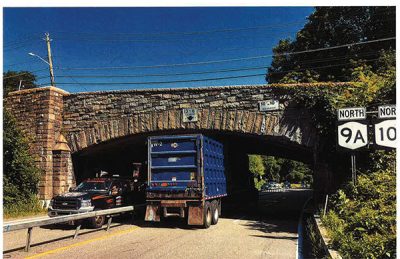State Earmarks $20M for Route 9A Engineering, Environmental Reviews
News Based on facts, either observed and verified directly by the reporter, or reported and verified from knowledgeable sources.

Area state representatives announced last week that New York’s Department of Transportation (DOT) has allocated up to $20 million in the current fiscal year for the next phase of the Route 9A modernization project.
The money will cover preliminary engineering, final design and the state mandated environmental reviews on the throughfare from the Taconic Parkway to Pleasantville Road in Briarcliff Manor. The work takes in the southern end of the stretch that was included in the corridor study that looked at the roadway’s condition in the six-mile stretch between the Taconic and the Route 9/9A split in Croton-on-Hudson.
State Sen. Peter Harckham (D-Lewisboro) said that he was encouraged the state was going to be making a major investment for a critically important travel route.
“For the many residents, commuters and business owners who regularly travel on this stretch of Route 9A, this is the best news possible,” Harckham said in a statement. “The safety of this roadway has long been an issue because of potholes, persistent flooding and aging infrastructure.”
Also pleased with the announcement of the funding was Briarcliff Manor Mayor Steve Vescio. Vescio has been among the most outspoken local officials on the issue and has been urging the state to improve the antiquated roadway.
Vescio said he was encouraged that since the state has committed major levels of funding, it could signal a good chance physical improvements will happen. In 2022, the state announced that it would spend more than $2 million to analyze the infrastructure and proposed recommendations.
“I don’t think the state is going to throw $22 million down the hole – they already spent $2 million on the corridor study,” Vescio said. “If you have the design plans, you’re in a much better position to get federal funding, and given that it’s a military transport route with Camp Smith to the north, I think that the federal government would say, ‘Yeah, we’re going to throw some money into this.’”
He added that it was unclear how long this phase of the project will take.
Route 9A was built more than 90 years ago and hasn’t seen many major improvements since it opened other than the installation of a guardrail. Along with persistent flooding in heavy rain, the roadway, also known as the Briarcliff-Peekskill Parkway, has seen periodic bridge strikes because larger trucks must travel in the left lane to fit under several overpasses.
The roadway is also much narrower than most of today’s parkways and lacks shoulders or breakdown lanes.
Starting last spring, a series of public workshops were held, giving residents and other stakeholders an opportunity to meet with DOT officials to express concerns about the roadway and possible future plans.
Assemblywoman Dana Levenberg (D-Ossining) co-wrote a letter with Assemblywoman MaryJane Shimsky (D-Dobbs Ferry) to Speaker Carl Heastie on Feb. 15, appealing for funds for the critical state route.
“We have heard our constituents loud and clear: Route 9A has been neglected for too long,” Assemblywoman Dana Levenberg (D-Ossining) stated last week. “That era of neglect is coming to an end now, with scheduled repaving starting at the end of June and this new commitment of $20 million for the next phase of the modernization of the Briarcliff-Peekskill Parkway.”
Vescio said it made sense for the state to look at the southern portion of the stretch first because of the drop-off in volume south of the Taconic Parkway. North of that point, Route 9A sees about 50,000 vehicles a day while south of that interchange, it decreases sharply to 22,000 vehicles daily, he said.
Considered one of the state’s most dangerous stretches of roadway, it is the scene of more than 120 major accidents a year.
Vescio said a key challenge is staying on top of the state to make sure the work is pursued in a timely fashion.
“We just want to make sure that it doesn’t go off track, and that the concerns that were expressed during the public process and the corridor study are taken into account, that people’s concerns are addressed and that the roadway is upgraded in an efficient manner,” Vescio said.

Martin has more than 30 years experience covering local news in Westchester and Putnam counties, including a frequent focus on zoning and planning issues. He has been editor-in-chief of The Examiner since its inception in 2007. Read more from Martin’s editor-author bio here. Read Martin’s archived work here: https://www.theexaminernews.com/author/martin-wilbur2007/
